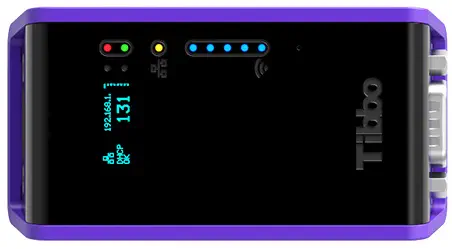Payments and Security
Your payment information is processed securely. We do not store credit card details nor have access to your credit card information.
Description
- DIN rail mounting plate
- Wall mounting plate and two screws
Size
- 90 x 48 x 25 mm
- Powered by Tibbo OS (TiOS)
- 10/100Base-T, auto-MDIX Ethernet port
Software-selectable RS232, RS422, and RS485 modes:
- Baudrates of up to 921,600bps
- None/even/odd/mark/space parity modes
- 7 or 8 bits/character
- RTS/CTS and XON/XOFF flow control
Up to 3 serial channels in the RS232 mode, flexible mapping:
- One channel: RX, TX, CTS, RTS, DSR, and DTR lines
- 3 channels: RX, TX, RX2, TX2, RX3, and TX3 lines
- 6 additional arrangements
- Built-in buzzer
- RTC (no backup battery)
- 22KB SRAM for Tibbo BASIC/C variables and data
- 1MB flash memory for TiOS, application code, and file system
- 2048-byte EEPROM for data storage
Up to 2 serial channels in the RS422 mode, flexible mapping
- A single channel in the RS485 mode
Eight LEDs:
- Green and red main status LEDs
- Yellow Ethernet link LED
- Five blue LEDs (for Wi-Fi signal strength indication, etc.)
- Software-controlled PLL for selecting high or low speed
- Power: 12VDC (9 ~ 18V)
- Operating temperature range: -5 ~ +70°C
- Firmware is upgradeable through the serial port or network
- Tibbo BASIC/C application can be debugged through the Ethernet LAN
- CE- and FCC-certified
Programming (Platform objects)
- beep — generates buzzer patterns
- button — monitors the MD (setup) button
- fd — manages the flash memory file system and direct sector access
- io — handles I/O lines, ports, and interrupts
- lcd — controls the OLED display
- net — controls the Ethernet port
- pat — "plays" patterns on a pair of status LEDs
- ppp — accesses the Internet over a serial modem (GPRS, etc.)
- pppoe — accesses the Internet over an ADSL modem
- romfile — facilitates access to resource files (fixed data)
- rtc — keeps track of date and time
- ser — controls the serial channels
- sock — socket comms (up to 16 UDP, TCP, and HTTP sessions)
- stor — provides access to the EEPROM
- sys — in charge of general device functionality
- wln — handles the Wi-Fi interface












